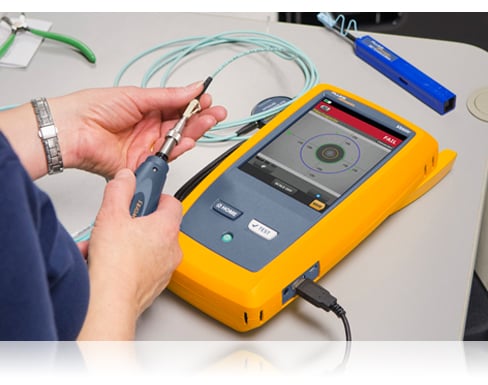How robotic vision empowers instant decision-making
All You Required to Know About Robotic Vision and Its Applications in Advanced Optical Measurement Solutions
Robotic vision represents a considerable innovation in the junction of computer system vision, man-made knowledge, and artificial intelligence. This modern technology enhances the accuracy of optical measurement systems, allowing real-time data evaluation and boosted high quality control. Its influence extends multiple industries, from manufacturing to medical care. The developing landscape of robotic vision raises questions about future capabilities and applications. What developments lie in advance in this transformative area?
Recognizing Robotic Vision: Trick Concepts and Technologies
Robotic vision incorporates the modern technologies and techniques that allow devices to translate and recognize aesthetic info from their atmosphere. This field combines elements of computer vision, expert system, and device knowing to promote computerized decision-making based on visual data. Key ideas consist of photo processing, which involves the enhancement and evaluation of photos to draw out significant functions, and item recognition, which permits makers to recognize and classify items within a scene.

The Integration of Robotic Vision With Optical Dimension Systems
As markets significantly demand precision and efficiency, the assimilation of robot vision with optical measurement systems has become a transformative approach. This synergy enables robots to regard and translate their environments, improving the capability of optical measurement systems to evaluate and examine things with unmatched precision. By equipping optical sensing units with advanced imaging modern technologies, robotic vision allows real-time information collection and processing, assisting in instant modifications to dimension specifications.
In addition, the mix empowers automated systems to find variations in dimensions, surface area high quality, and positioning, which are critical in top quality control procedures. Improved formulas, such as artificial intelligence, more augment this integration by boosting the systems' capacity to adapt to various settings and scenarios. The combination not only improves dimension procedures yet additionally decreases errors, making certain that products meet rigorous market standards, therefore strengthening the function of robotic vision in the future of optical measurement systems.
Applications of Robotic Vision in Manufacturing
In modern production environments, the use of vision systems has actually changed production processes by making it possible for makers to carry out tasks with amazing accuracy and speed. Robotic vision systems are progressively employed for quality assurance, where they check items for flaws and warranty adherence to specifications. These systems use video cameras and progressed formulas to analyze products in real-time, significantly decreasing the risk of human mistake.
Furthermore, robotic vision helps with automation in production line, permitting robots to properly determine components and construct them with minimal downtime. This technology likewise enhances supply management, as vision systems can keep an eye on stock levels and detect discrepancies, ensuring a smooth supply chain.
Robotic vision help in the application of smart factories, where data from vision systems can be integrated with various other modern technologies to enhance workflows (optical measurement system). Overall, the applications of robotic vision in manufacturing show its crucial role in boosting effectiveness, high quality, and productivity across different fields
Robotic Vision in Healthcare: Transforming Patient Treatment

In recovery, robot vision help in keeping track of patient progression and customizing treatment sessions to individual demands. It supports physician by automating jobs such as data collection and person surveillance, allowing for even more time to concentrate on direct patient interaction. Additionally, robot site link vision enhances telemedicine by enabling remote diagnosis and online appointments, linking the space in between people and doctor. Overall, the application of robot vision in medical care is changing person treatment, leading to improved end results, performance, and individual satisfaction.
Future Trends and Growths in Robotic Vision Technology
The fast evolution of robotic vision innovation assures to even more enhance its applications across different sectors, consisting of healthcare. Future trends show a significant change in the direction of integrating synthetic intelligence and artificial intelligence, making it possible for systems to discover from vast datasets and boost accuracy in time. Improved sensing unit innovations and deep knowing formulas are expected to refine object acknowledgment abilities, enabling robots to translate complex environments a lot more efficiently.

The integration of enhanced fact (AR) with robot vision will likely transform exactly how robots aid in surgical procedures and diagnostics. This harmony will certainly facilitate real-time data visualization, improving decision-making processes. Furthermore, miniaturization of components will certainly lead to more compact and versatile robotic vision systems ideal for a variety of jobs. As these advancements unravel, markets will certainly witness increased automation and performance, solidifying robot vision as a foundation of cutting-edge technical services.
Frequently Asked Inquiries
What Are the Main Elements of a Robotic Vision System?
The major components of a robotic vision system include electronic cameras for picture capture, cpus for information analysis, algorithms for analysis, and actuators for activity. With each other, these components allow robots to perceive and connect with their setting properly.
How Does Robotic Vision Improve Precision in Measurements?
Robotic vision improves dimension accuracy by making use of sophisticated imaging modern technologies, making it possible for exact item detection and spatial analysis. This capacity lowers human error, boosts repeatability, and permits for real-time modifications, eventually enhancing overall measurement dependability and performance.
What Industries Benefit Most From Robotic Vision Technology?
Numerous markets benefit substantially from robotic vision technology, consisting of manufacturing, medical care, farming, and logistics. These industries utilize enhanced accuracy, effectiveness, and automation, resulting in improved efficiency and decreased functional prices in their respective processes.
Can Robotic Vision Systems Job in Low-Light Conditions?
Robotic vision systems can indeed work in low-light conditions, using innovative sensing units and algorithms to improve image clarity. This capability allows them to execute efficiently in various atmospheres, consisting of commercial and my blog surveillance applications, despite marginal lighting.
What Are the Prices Related To Carrying Out Robotic Vision?
The prices connected with applying robot vision vary considerably, influenced by parts such as electronic cameras, software, and assimilation. Added expenditures include maintenance, training workers, and useful reference potential upgrades to existing systems, which can collect in time.